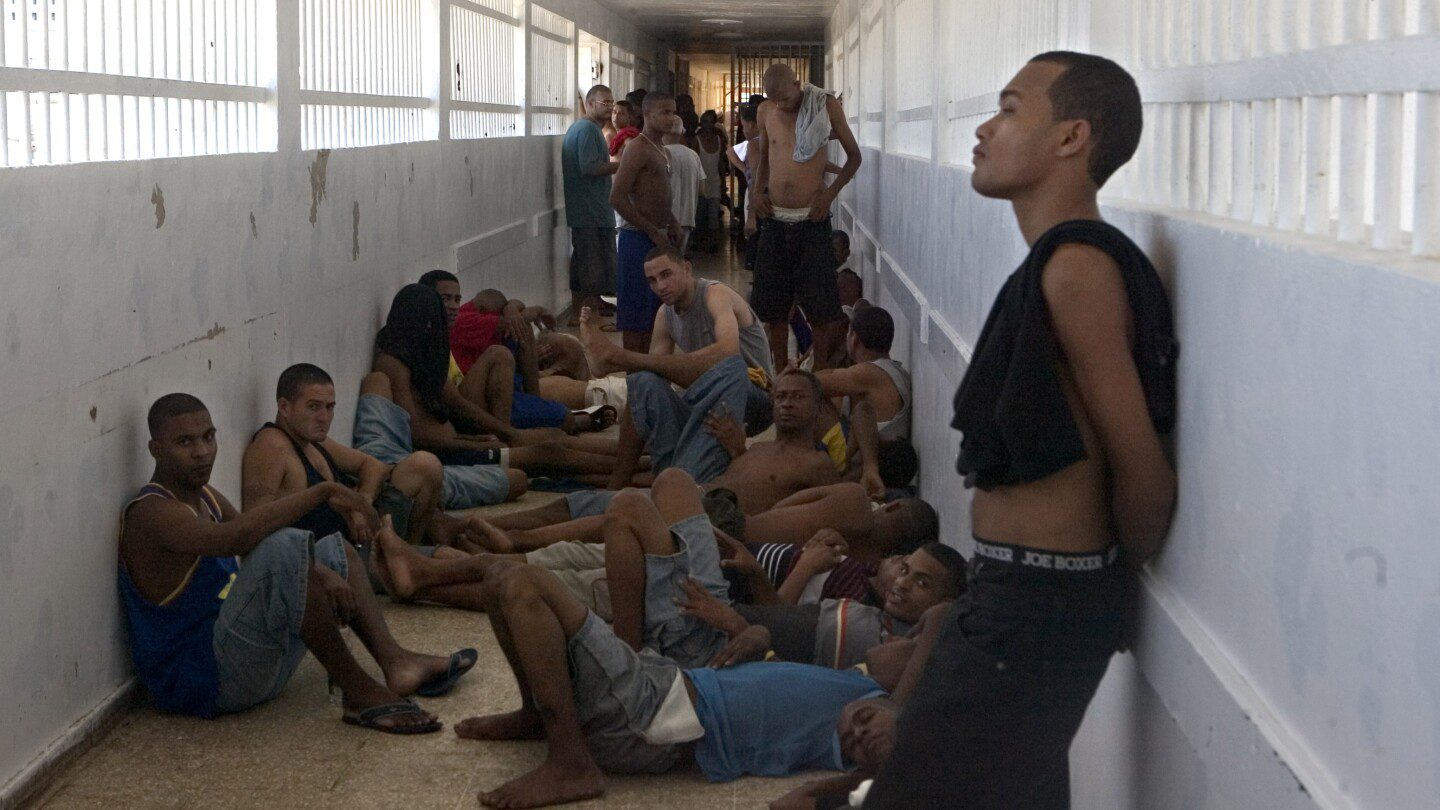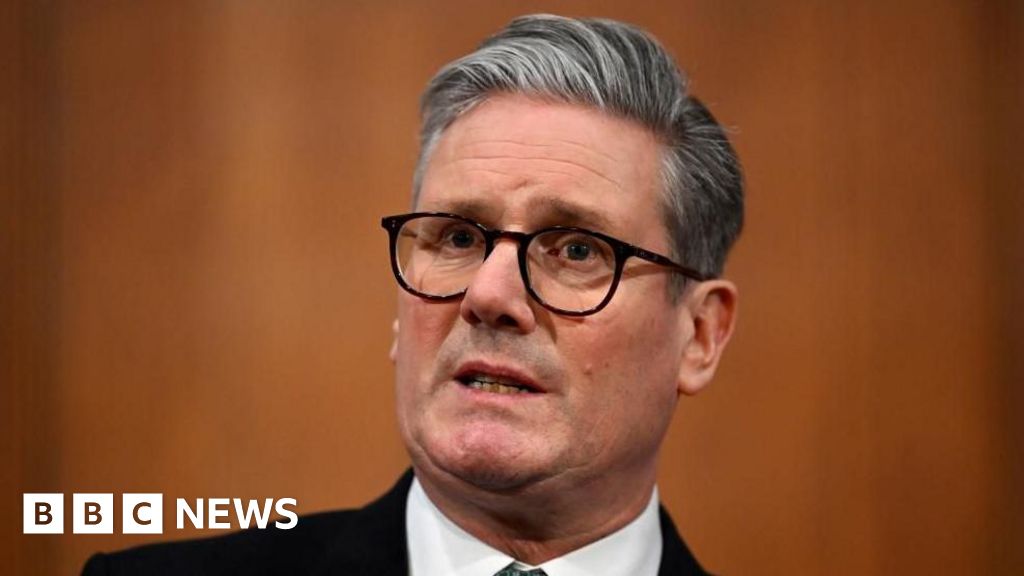
SANTO DOMINGO, Dominican Republic (AP) — Inmates who sleep on the floors of prisons in the Dominican Republic have been labeled “frog men,” often bedded beside overflowing toilets or makeshift latrines.
Thousands are crammed into the nation’s overcrowded detention facilities, with some prisons operating at up to seven times their intended capacity. The majority of these individuals are detained without formal charges, leading activists to express grave concerns about the inhumane conditions they endure and the lack of adequate medical care.
Despite claims from officials to enhance the justice system, critics argue that the Dominican Republic persists in enforcing and permitting pretrial detentions in nearly all criminal matters lacking formal charges. As prison challenges grow, meaningful reforms remain elusive.
“Prisons have devolved into no man’s land,” remarked Rodolfo Valentín Santos, the head of the National Public Defense Office of the Dominican Republic.
According to the National Public Defense Office, over 60% of the approximately 26,000 detainees are held in preventive custody without facing any charges. Advocates contend that this measure is intended to safeguard public safety while allowing law enforcement the necessary time to gather evidence.
However, Valentín highlighted that certain detainees have languished for as long as 20 years without ever being convicted. He pointed out that the nation’s Constitution and penal regulations define preventive detention as an “exceptional” practice, with six alternative measures available, such as bail, which are seldom utilized.
‘We face a critical situation’
Recently, Darwin Lugo and Yason Guzmán exited La Victoria National Penitentiary, situated in the northeastern section of bustling Santo Domingo.
Originally designed for a maximum of 2,100 inmates, La Victoria now houses over 7,000, with more than 3,300 held under pretrial detention, according to the National Public Defense Office. It stands as the oldest and most densely populated prison in the country.
“You must be vigilant for your own safety,” Lugo cautioned, having visited several friends imprisoned there, some without formal charges.
“Many of them are struggling,” Guzmán added regarding the welfare of inmates. “The poverty is extreme.”
They revealed that friends, confined for over five years, are well-connected and often request minimal support, such as recharging their cell phone SIM cards.
Last year, at least 11 inmates tragically lost their lives in La Victoria following a short circuit that ignited a fire and explosion—one of the deadliest prison disasters since 2005, when over 134 inmates perished in Higüey due to a gang-related arson.
In response to the La Victoria incident, President Luis Abinader appointed former prison director Roberto Santana to lead a commission aimed at reforming the nation’s more than 40 prisons.
“We must acknowledge, gentlemen, that we are facing a severe situation in all of the country’s incarceration facilities,” Abinader stated during the announcement last March. He also mentioned plans to utilize funds recovered from corruption cases to finance the construction of new prisons.
Santana has long advocated for the closure of La Victoria and the 15 de Azua prison in western Dominican Republic. He asserted that the commission he leads is dedicated to these significant tasks without external influences.
“We do not take directives from politicians or any other entity,” Santana affirmed, having previously been involved in training staff for the newer facilities established in the early 2000s.
With past experiences of imprisonment, including two years of solitary confinement, Santana understands the dire conditions within La Victoria.
‘On the verge of breaking point’
In the early 2000s, the Dominican Republic commenced construction on 21 new correctional facilities intended to enhance conditions. These were managed by trained professionals, unlike the nation’s remaining 19 prisons, which are overseen by police and military personnel.
Yet, according to the National Commission of Human Rights, conditions in these newer prisons have deteriorated significantly.
“The Dominican Republic’s prison system is on the verge of collapse,” according to the commission’s latest 2023 report.
Across detention centers nationwide, overcrowding is rampant. Many cells are devoid of bathrooms, natural light, and proper ventilation, exacerbating health issues. Approximately 5,000 inmates suffer from ailments, ranging from heart disease to cancer and HIV, with only limited medication available. Some institutions lack any medical personnel, as highlighted by Valentín’s office, which publishes an annual detailed report on prison conditions.
In the 2023 report, the office also called for the closure of facilities, including one in the coastal city of Nagua.
“The overwhelming overcrowding makes genuine rehabilitation impossible, as inmates have been neglected by the state,” the report stated. “Under the current conditions, it is clear they are treated as objects rather than as individuals with rights.”
In one notable case, a prison was so overcrowded that authorities were forced to confine inmates outdoors in trucks with metal roofs that became dangerously hot in the sun, leading to lawsuits, Valentín reported.
A spokesperson for Colonel Roberto Hernández Basilio, the head of prisons, did not respond to interview requests. Hernández has previously claimed that efforts are underway to enhance conditions.
At the same time, Dominican Attorney General Miriam Germán Brito has voiced concerns regarding the pretrial detention system but clarified that the ultimate decision rests with the judges. A representative for Germán stated that she was not available for media inquiries.
Both Santana and Valentín believe government corruption is a key factor hindering significant reforms in the prison system, alleging that military and police personnel profited from illicit activities within the facilities.
This problem of public corruption also led to the suspension of a much-anticipated prison construction project, intended to alleviate overcrowding.
Despite the abandonment of this half-finished facility, Santana expressed optimism, anticipating the construction of 25 new prisons by 2028, capable of accommodating over 20,000 inmates.
While these developments could help address the issue of overcrowding, concerns persist. Activists have pointed out that individuals remain incarcerated even after a judge has ruled for their release.
The National Commission of Human Rights reported that around 2,700 inmates continue to be held due to backlogged court processes, while many are unable to secure their freedom because they are unable to pay court-ordered fines.
____
Follow AP’s coverage of Latin America and the Caribbean at https://apnews.com/hub/latin-america









